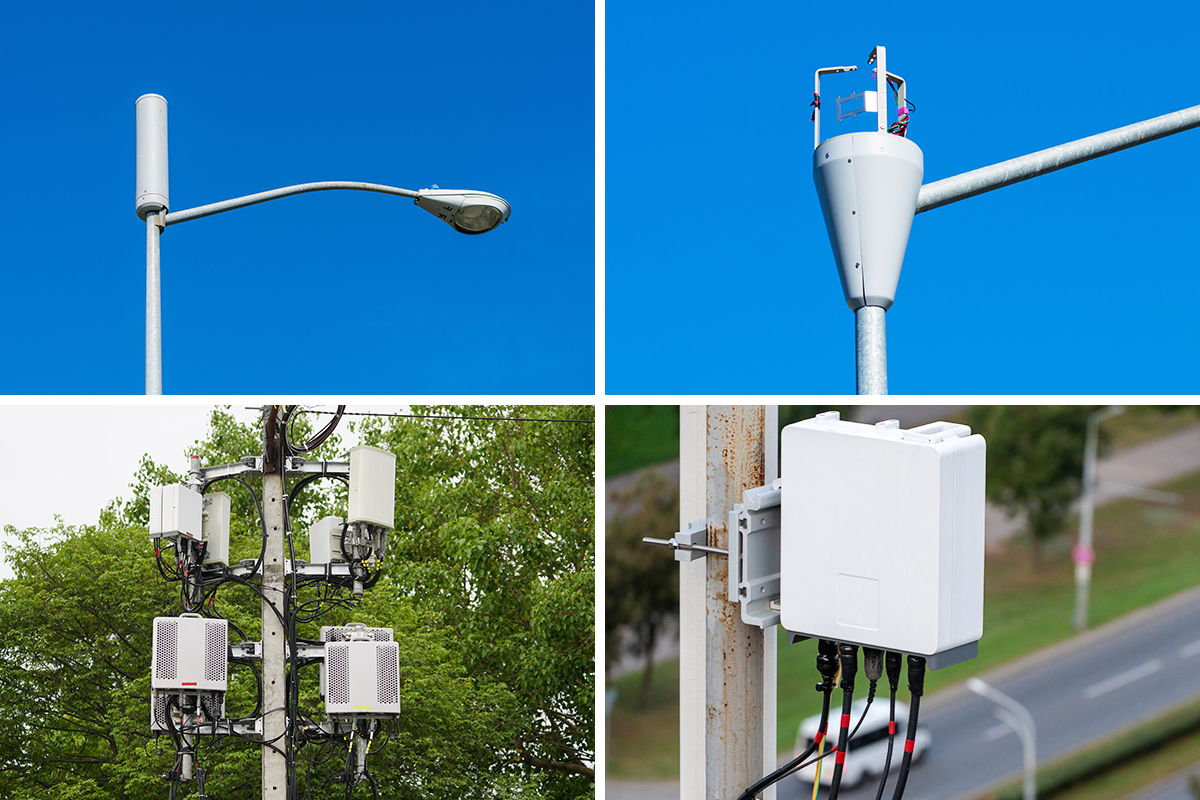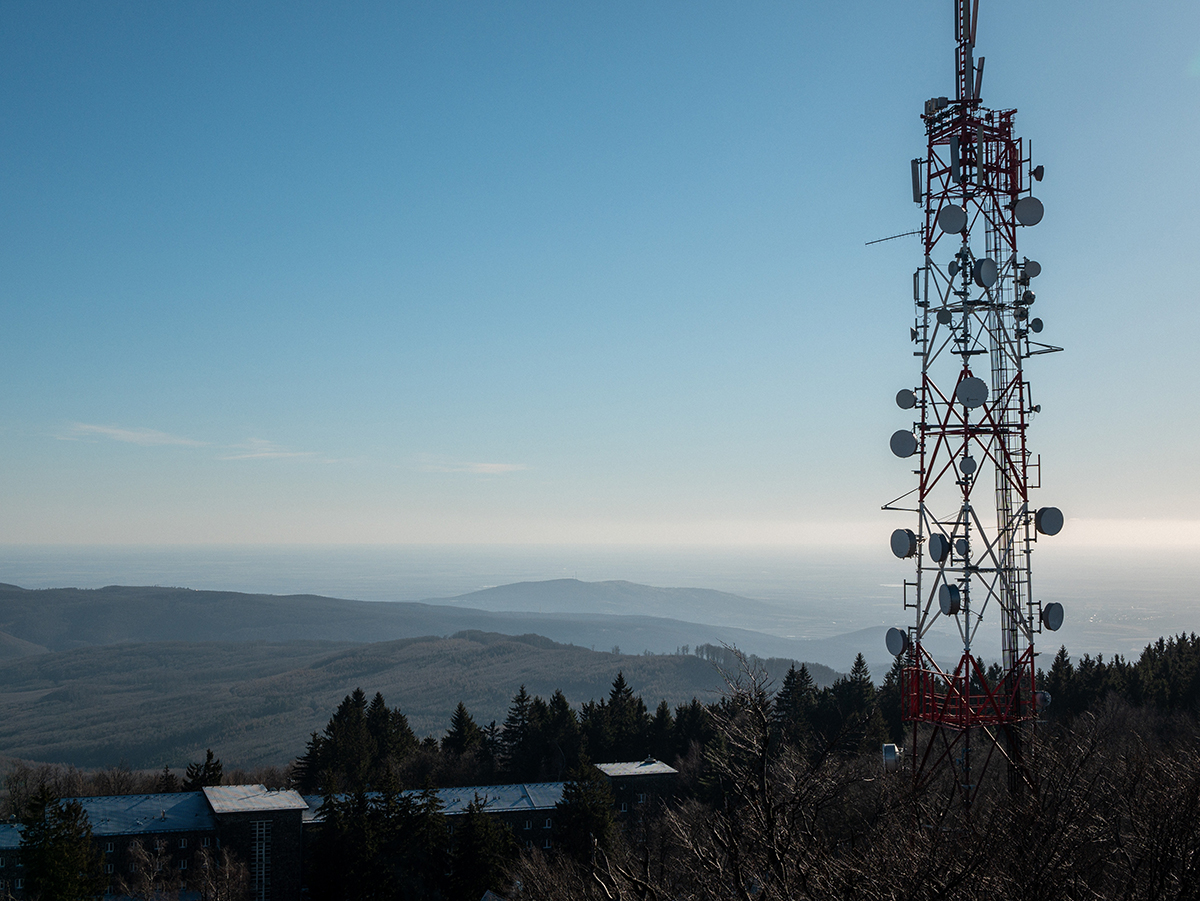Sharp Rise in Small Cells After 5G Rollout: A Concern for Microwave Syndrome and Ways to Prevent
Andrew Molnar never thought he would be one to get involved in local political activism.
But he and his wife, Marie, are now leading the action to ensure that both the town and the city of Ithaca, New York, can control where wireless facilities are placed in the municipalities.
It all started four years ago. Mr. and Mrs. Molnar were hiking at the Cornell Plantations, a park at Cornell University, when the couple started experiencing headaches.
“We looked around, and there was this huge new cell tower about 100 yards from us,” Mr. Molnar, a Cornell graduate, told The Epoch Times. “We got out of the area, and within about 10 minutes, we both felt totally better again.”
The Molnars are just two of the millions of Americans with electromagnetic sensitivity, also known as microwave syndrome.
Individuals with microwave syndrome may develop symptoms like dizziness, insomnia, pain, and mood and memory problems when exposed to electromagnetic fields (EMFs) from power sources and wireless signals transmitted by phones, cell towers, and emerging small cells.
5G and the Rise of Small Cells
Wireless facilities, especially small cells, have started popping up like mushrooms after rain in both residential and commercial areas.
There are two types of wireless facilities. Cell towers, or macro cells, can reach 300 feet in height, may have more than 20 antennae, and maintain coverage for miles of radius. Small cells, on the other hand, are much more compact, and they relay signals and maintain coverage between a few hundred yards up to about 2 miles.
Small cells are the backbones of the 5G network.
Though their frequencies overlap with 4G, 5G signals generally have a higher upper frequency, making them less penetrative; therefore, they need antennae at closer proximities to maintain connections.
Small cells were rapidly installed during the 5G rollout. People have discovered them outside their homes, on lamp posts, and utility poles along the sidewalk.
In 2020, there were over 417,000 wireless facilities; by the end of 2022, there were around 1.5 million in operation. Wireless facilities in operation. (The Epoch Times)
Wireless facilities in operation. (The Epoch Times)
Apart from emitting 5G signals, small cells also emit 3G and 4G signals; both are shown to be harmful. This means people are exposed to denser and stronger wireless radiation, increasing potential health risks.
Numerous papers have documented these signals’ adverse health effects on residents.
Retired oncologist Dr. Lennart Hardell from Orebro University Hospital in Sweden has published three case studies (pdf) involving residents living near newly installed 5G small cells or base stations.
One of the studies was published in January. Two previously healthy people, a 63-year-old man and a 62-year-old woman, developed symptoms of fatigue, insomnia, tinnitus, distress, skin disorders, and irregular blood pressure after the installation of a 5G small cell on the roof of their apartment.
Dr. Hardell found that after the new base station was installed, the strength of the radiofrequency signals increased.
“Due to the severity of symptoms, the couple left their dwelling and moved to a small office room [with lower radiation strength]. Within a couple of days, most of their symptoms alleviated or disappeared completely,” Dr. Hardell wrote.Preventing Redundant Cell Towers
In 2020, telecommunication giant Verizon applied for a master license with the city of Ithaca. If approved, the telecom can apply for permits to install new cell facilities in the adjacent town.
Mr. and Mrs. Molnar had just returned from a trip to Europe in 2019 when they saw people signing a petition to stop the approval. “That’s when we heard about it,” Mr. Molnar said.
The couple were not anti-technology, but given their sensitivity to wireless signals, they were concerned.
The petition drew over 500 signatures, yet few wanted to lead the action to the next step. So the Molnars decided to step up.
Then the COVID pandemic began, “so we had some extra time, and we just both felt very strongly intuitively that we were being guided to help lead this,” Mr. Molnar said.
In preparation, the Molnars started educating themselves on EMFs and consulted lawyers. They spent a month or two familiarizing themselves with the laws, health concerns, and policies.
A cell tower in the mountains in clear weather (Shutterstock/Wirestock Creators)
The Power of Local Governments
As it turns out, the Telecommunication Act of 1996 (TCA) gave local governments considerable power to control the placement of new wireless facilities; they just need to know how to use this power to their advantage.“The only truly effective means of controlling the number and placement of wireless facilities in a jurisdiction is a well-drafted local zoning ordinance,” Andrew Campanelli, a lawyer experienced in handling cell tower opposition cases and TCA-based litigation, told The Epoch Times.
A well-drafted zoning ordinance would detail suitable places to site the cell towers. These sites are generally advised to be inconspicuous and as far from residential areas as possible. Most importantly, zoning ordinances would also include procedural guidelines that allow the planning board to make decisions without violating the TCA.
The telecoms “know the law, and they also unfortunately know that most local governments are clueless,” Mr. Campanelli said, “and they take advantage of that.”
A well-written zoning ordinance would set forth regulations for the placement of wireless facilities while preventing redundant installations.
One of the procedural requirements of the TCA is that local governments must ask the telecom to prove there is a gap in call service and that the new installations it is applying for are the least intrusive means to fill that gap.
Most zoning ordinances do not have a procedural guideline that the planning board can follow, so many mistakenly reject an application without addressing this procedural requirement, resulting in the telecom filing a lawsuit within 30 days of the decision. In these instances, the court always rules in the telecom’s favor due to the local government’s mistake, Mr. Campanelli explained.
Several grassroots organizations provide free examples of local ordinances on their websites. However, Mr. Campanelli emphasized that zoning ordinances cannot be directly copied because the ordinances may differ substantially depending on the type of land and the municipality.
While some people file for a moratorium or cease-and-desist resolutions, Mr. Campanelli explained that neither would be effective for controlling the placement of cell towers.
Permit applications must be processed within a certain period from the day they are filed, regardless of whether the application is complete. This period of time dedicated to processing the application is called the “shot clock.” Both moratorium and cease-and-desist resolutions have no legal authority to stop or delay the shot clock.
Updating the Local Ordinance
Mr. and Mrs. Molnar asked their local government to update its ordinance on wireless facilities.
“I often tell people: If you’re really serious about changing things in your town, you have to be the most educated person,” Mr. Molnar said. If educated on the issues, an advocate won’t be seen as a “wild conspiracy theorist.”
In the spring of 2020, the Molnars began reaching out to city councilors and meeting them individually.
Some of the 500 people who signed the petition formed the Ithacans for Responsible Technology, a task force the Molnars and four other active members led together. Hundreds of people were part of the mailing list and would send in testimonies, voicing their concerns to local officials.
“There is power in numbers. When you have two people contact council members versus 200, it makes a difference,” Mr. Molnar said.
At first, none of the councilors believed them. Mr. and Mrs. Molnar tried to get the local media’s support to no avail. A Cornell professor also sent emails to the government opposing the Molnars’ efforts, further damaging the couple’s credibility.
The Molnars responded to the professor via email, refuting his claims, but it seemed like they had hit a wall.
Four months into it, the two had almost decided to give up. But the day after, Mr. Molnar had his first successful conversation with a council member.
The council member called him, and “it totally turned around,” Mr. Molnar said. Within the next four or five months, “the dominoes fell.”
Upcoming Bills Designed to Strip Local Control
Ithaca has two municipalities, one for the city and one for the town. In 2021, the city of Ithaca updated its zoning ordinance, and the town of Ithaca town updated its ordinance in 2023.
Mr. Molnar said that over the years, he and his wife have made friends with the councilors and their staff, which has made keeping track of new wireless facilities much easier. Nonetheless, the two would check in on meeting agendas to review new applications.
“I know lots of towns that tried and haven’t gotten things done. So it’s not all rosy,” he added. “But I also know there’s lots of examples where citizens like us kept pressing and persevering, and they eventually got at least some good things done.”
However, new bills may obliterate the painstaking progress the Molnars have made over the past three years.
Around 50 bills are currently being fast-tracked through Congress and to the Senate. Among them, H.R.3557—the American Broadband Deployment Act of 2023—is the most notorious.
It removes local control over cell tower placement, attorney Odette Wilkins told The Epoch Times via email. Ms. Wilkins is leading the action against 5G small cells in New York City.
The bill overrides case laws that require telecom carriers to prove a service gap and use the least intrusive means to fill that gap for their wireless installations.
When the TCA was adopted, Congress established “a balancing of interests” of the wireless industry and local governmental protection of residents, Mr. Campanelli said. This balance would be “completely destroyed” by the new bill.
“If that passes, wireless facilities will start popping up on people’s front lawns. All over the place,” he continued, “against their will and without paying them anything.”
Reposted from: https://www.theepochtimes.com/health/sharp-rise-of-small-cells-mysterious-symptoms-and-ways-to-prevent-5481126
Follow the series “EMF: The Invisible Hazard”.



.png)

.png)




.jpg)
Comments
Post a Comment